
AI is entering a new era��one defined by agents that reason, plan, and take action. These agentic systems dynamically interact with APIs, tools, and even the physical environment, which introduces new complexity and vastly expands the AI attack surface and potential risks. A single compromised model can now influence downstream decisions, access external systems, trigger cascading failures��
]]>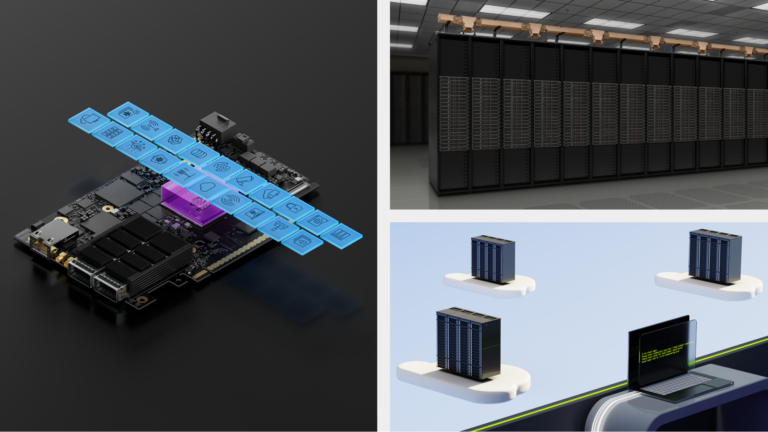
Organizations are increasingly turning to accelerated computing to meet the demands of generative AI, 5G telecommunications, and sovereign clouds. NVIDIA has unveiled the DOCA Platform Framework (DPF), providing foundational building blocks to unlock the power of NVIDIA BlueField DPUs and optimize GPU-accelerated computing platforms. Serving as both an orchestration framework and an implementation��
]]>
Imagine being able to put your best sales associate in front of every customer for every interaction. Your best sales associate offers product recommendations and how-to guidance, and explains related products customers might not have considered. The NVIDIA retail shopping advisor, introduced in this post, is a prebuilt, end-to-end AI workflow. It provides a reference design that demonstrates��
]]>Large language models (LLMs) adopted for specific enterprise applications most often benefit from model customization. Enterprises need to tailor ?LLMs for their specific needs and quickly deploy them for low-latency and high-throughput inferencing. This post will help you get started with this process. Specifically, we��ll show how to customize the Llama 3 8B NIM for answering questions in��
]]>Brev.dev is making it easier to develop AI solutions by leveraging software libraries, frameworks, and Jupyter Notebooks on the NVIDIA NGC catalog. You can use Brev.dev to easily deploy software on an NVIDIA GPU by pairing a cloud orchestration tool with a simple UI. Get an on-demand GPU reliably from any cloud, access the notebook in-browser, or SSH directly into the machine with the Brev��
]]>
In financial services, portfolio managers and research analysts diligently sift through vast amounts of data to gain a competitive edge in investments. Making informed decisions requires access to the most pertinent data and the ability to quickly synthesize and interpret that data. Traditionally, sell-side analysts and fundamental portfolio managers have focused on a small subset of��
]]>
With AI introducing an unprecedented pace of technological innovation, staying ahead means keeping your skills up to date. The NVIDIA Developer Program gives you the tools, training, and resources you need to succeed with the latest advancements across industries. We��re excited to announce the following five new technical courses from NVIDIA. Join the Developer Program now to get hands-on��
]]>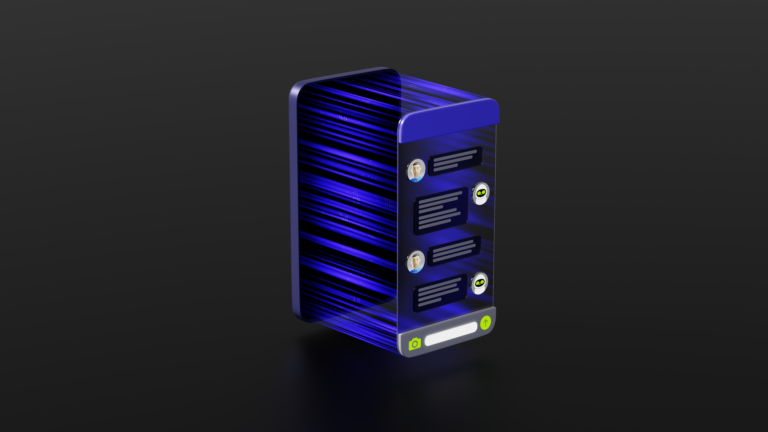
This week��s model release features the NVIDIA-optimized language model Smaug 72B, which you can experience directly from your browser. NVIDIA AI Foundation Models and Endpoints are a curated set of community and NVIDIA-built generative AI models to experience, customize, and deploy in enterprise applications. Try leading models such as Nemotron-3, Mixtral 8x7B, Gemma 7B��
]]>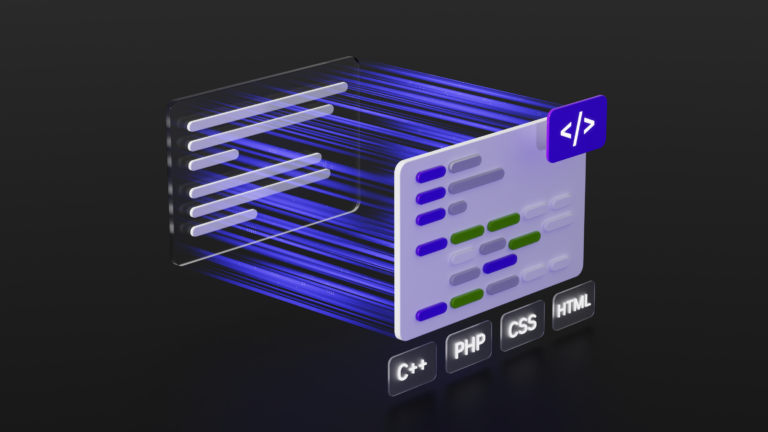
Coding is essential in the digital age, but it can also be tedious and time-consuming. That��s why many developers are looking for ways to automate and streamline their coding tasks with the help of large language models (LLMs). These models are trained on massive amounts of code from permissively licensed GitHub repositories and can generate, analyze, and document code with little human��
]]>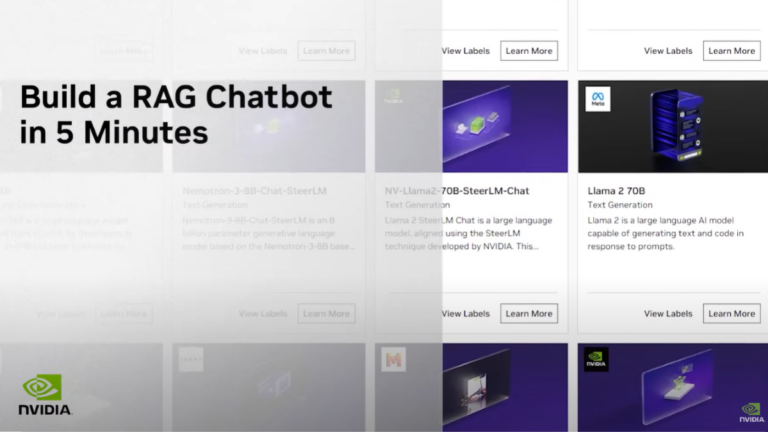
Retrieval-augmented generation (RAG) is exploding in popularity as a technique for boosting large language model (LLM) application performance. From highly accurate question-answering AI chatbots to code-generation copilots, organizations across industries are exploring how RAG can help optimize processes. According to State of AI in Financial Services: 2024 Trends, 55%
]]>This week��s model release features the NVIDIA-optimized language model Phi-2, which can be used for a wide range of natural language processing (NLP) tasks. You can experience Phi-2 directly from your browser. NVIDIA AI Foundation Models and Endpoints are a curated set of community and NVIDIA-built generative AI models to experience, customize, and deploy in enterprise applications.
]]>Developers have long been building interfaces like web apps to enable users to leverage the core products being built. To learn how to work with data in your large language model (LLM) application, see my previous post, Build an LLM-Powered Data Agent for Data Analysis. In this post, I discuss a method to add free-form conversation as another interface with APIs. It works toward a solution that��
]]>An AI agent is a system consisting of planning capabilities, memory, and tools to perform tasks requested by a user. For complex tasks such as data analytics or interacting with complex systems, your application may depend on ?collaboration among different types of agents. For more context, see Introduction to LLM Agents and Building Your First LLM Agent Application. This post explains the��
]]>
This week��s release features the NVIDIA-optimized Mamba-Chat model, which you can experience directly from your browser. This post is part of Model Mondays, a program focused on enabling easy access to state-of-the-art community and NVIDIA-built models. These models are optimized by NVIDIA using TensorRT-LLM and offered as .nemo files for easy customization and deployment.
]]>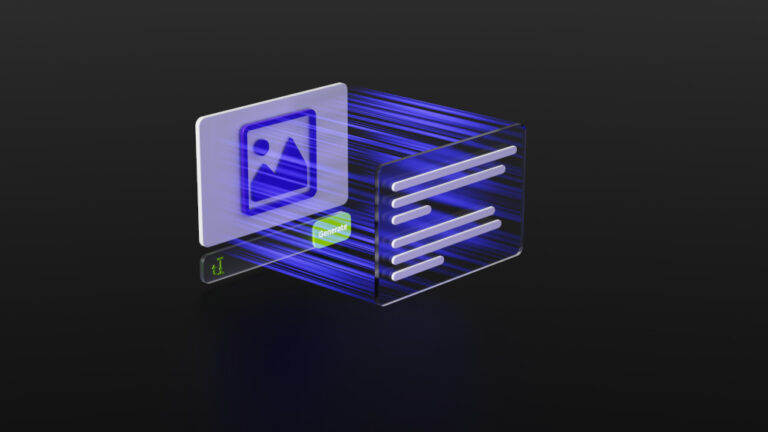
This week��s Model Monday release features the NVIDIA-optimized code Llama, Kosmos-2, and SeamlessM4T, which you can experience directly from your browser. With NVIDIA AI Foundation Models and Endpoints, you can access a curated set of community and NVIDIA-built generative AI models to experience, customize, and deploy in enterprise applications. Meta��s Code Llama 70B is the latest��
]]>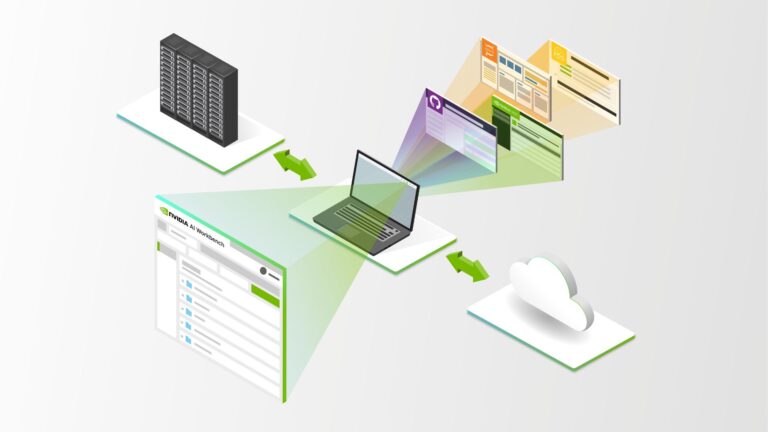
NVIDIA AI Workbench is now in beta, bringing a wealth of new features to streamline how enterprise developers create, use, and share AI and machine learning (ML) projects. Announced at SIGGRAPH 2023, NVIDIA AI Workbench enables developers to create, collaborate, and migrate AI workloads on their GPU-enabled environment of choice. To learn more, see Develop and Deploy Scalable Generative AI Models��
]]>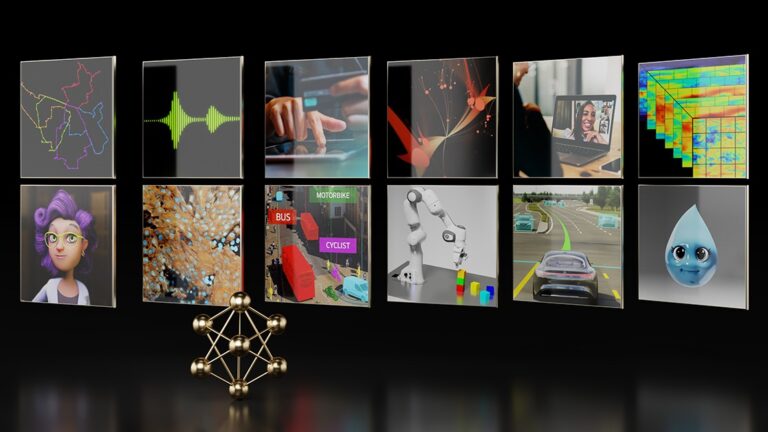
Following the introduction of ChatGPT, enterprises around the globe are realizing the benefits and capabilities of AI, and are racing to adopt it into their workflows. As this adoption accelerates, it becomes imperative for enterprises not only to keep pace with the rapid advancements in AI, but also address related challenges such as optimization, scalability, and security.
]]>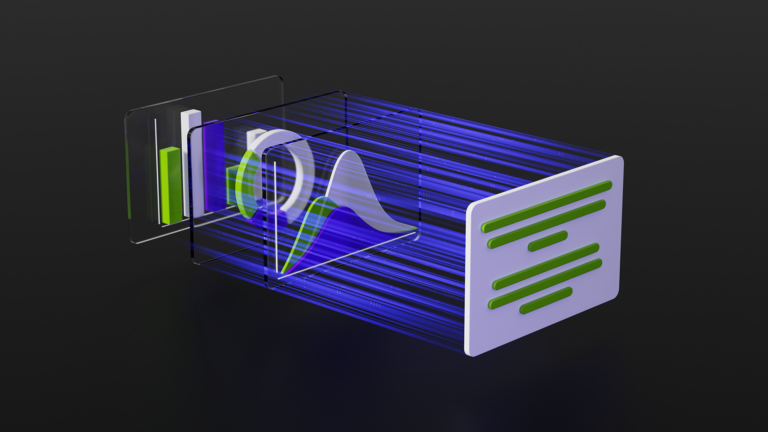
NVIDIA AI Foundation Models and Endpoints provides access to a curated set of community and NVIDIA-built generative AI models to experience, customize, and deploy in enterprise applications. On Mondays throughout the year, we��ll be releasing new models. This week, we released the NVIDIA-optimized DePlot model, which you can experience directly from your browser. If you haven��t already��
]]>
The NVIDIA PyG container, now generally available, packages PyTorch Geometric with accelerations for GNN models, dataloading, and pre-processing using cuGraph-Ops, cuGraph, and cuDF from NVIDIA RAPIDS, all with an effortless out-of-the-box experience.
]]>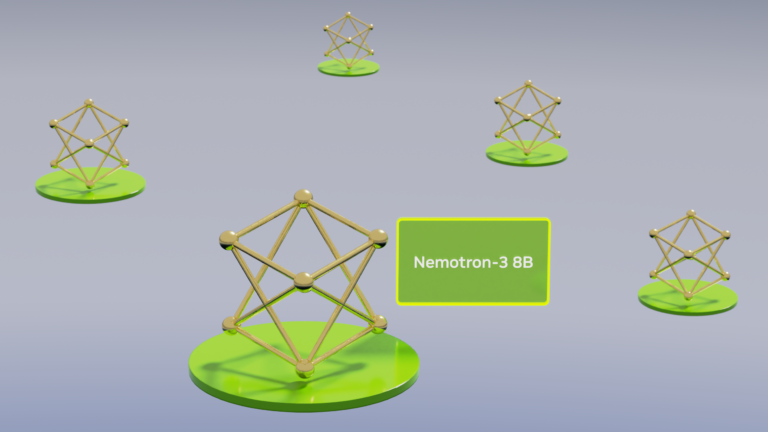
Large language models (LLMs) are revolutionizing data science, enabling advanced capabilities in natural language understanding, AI, and machine learning. Custom LLMs, tailored for domain-specific insights, are finding increased traction in enterprise applications. The NVIDIA Nemotron-3 8B family of foundation models is a powerful new tool for building production-ready generative AI��
]]>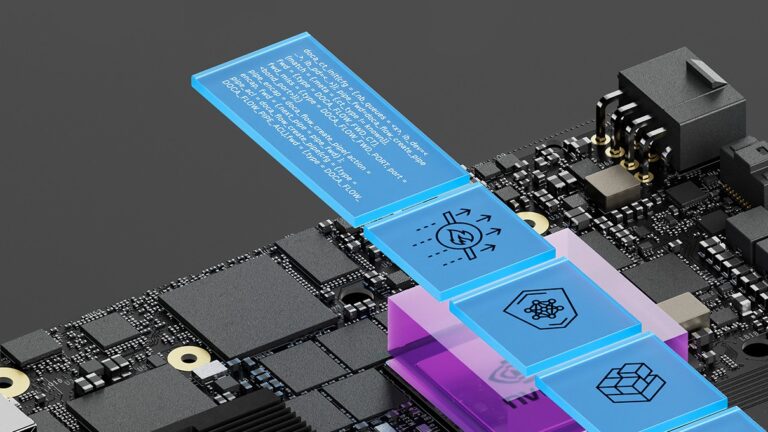
NVIDIA DOCA SDK and acceleration framework empowers developers with extensive libraries, drivers, and APIs to create high-performance applications and services for NVIDIA BlueField DPUs and ConnectX SmartNICs. It fuels data center innovation, enabling rapid application deployment. With comprehensive features, NVIDIA DOCA serves as a one-stop-shop for BlueField developers looking to accelerate��
]]>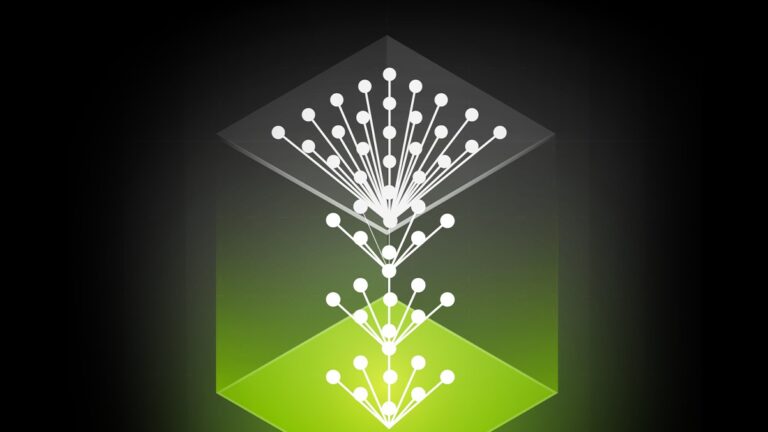
Fueled by data, ML models are the mathematical engines of AI, expressions of algorithms that find patterns and make predictions faster than a human can.
]]>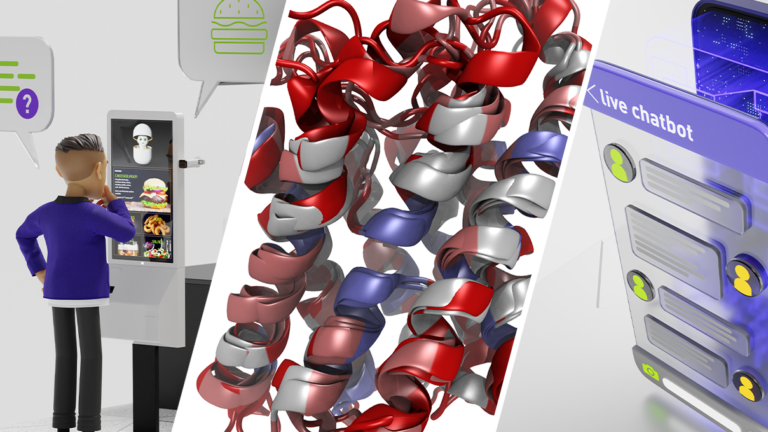
New SDKs are available in the NGC catalog, a hub of GPU-optimized deep learning, machine learning, and HPC applications. With highly performant software containers, pretrained models, industry-specific SDKs, and Jupyter notebooks available, AI developers and data scientists can simplify and reduce complexities in their end-to-end workflows. This post provides an overview of new and updated��
]]>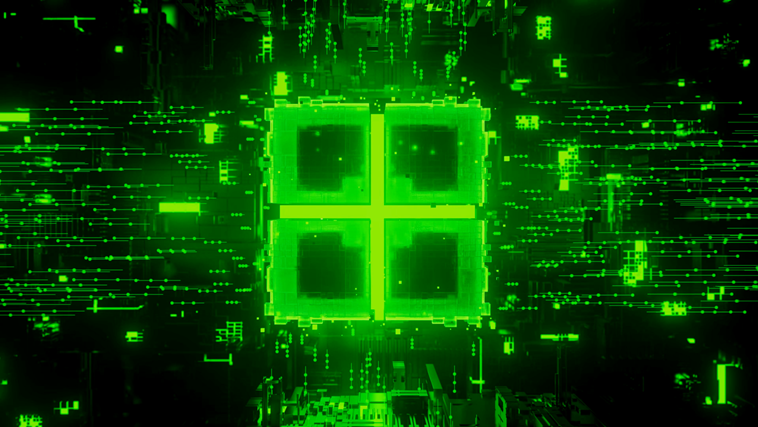
Following in the footsteps of large-scale supercomputers like the NVIDIA DGX SuperPOD, this post guides you through the process of creating a small-scale cluster that fits on your desk. Below is the recommended hardware and software to complete this project. This small-scale cluster can be utilized to accelerate training and inference of artificial intelligence (AI) and deep learning (DL)��
]]>
Watch this On-Demand webinar, Build A Computer Vision Application with NVIDIA AI on Google Cloud Vertex AI, where we walk you step-by-step through using these resources to build your own action recognition application. Advances in computer vision models are providing deeper insights to make our lives increasingly productive, our communities safer, and our planet cleaner. We��ve come a��
]]>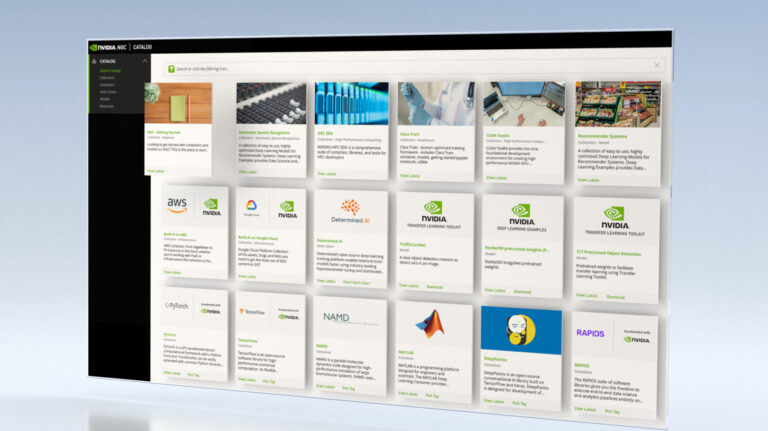 ]]>
]]>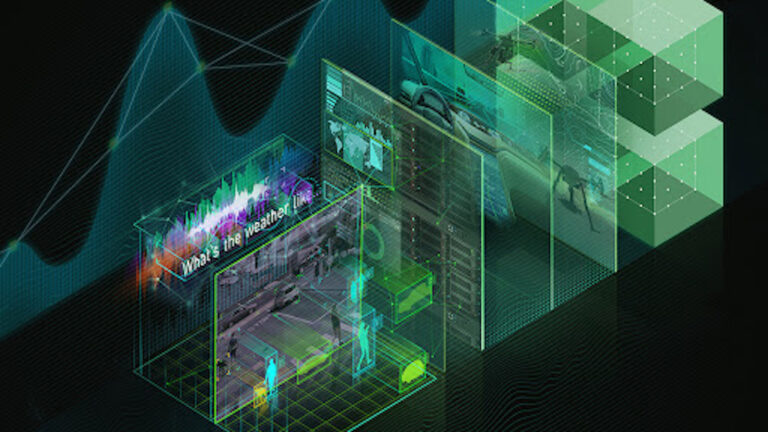
Join us on May 25 for the Building and Running an End-to-End Machine Learning Workflow, 5x Faster live webinar, where we walk you step-by-step through how to use these resources to build your ML workflow with software from the NGC catalog and Vertex AI. Machine learning (ML) employs algorithms and statistical models that enable computer systems to find patterns in massive amounts of data.
]]>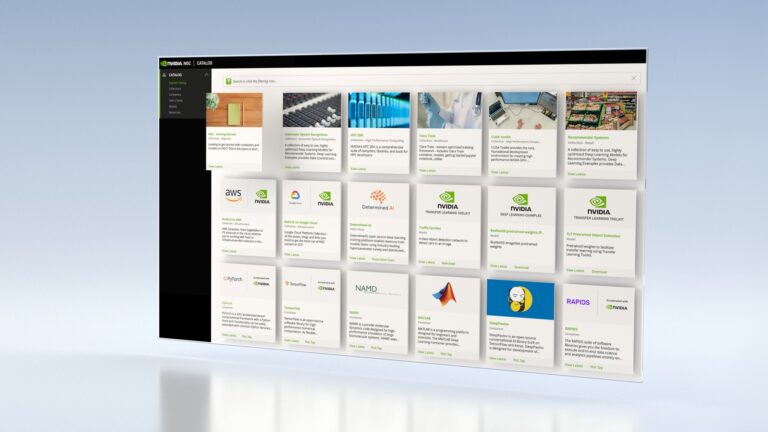 ]]>
]]>
The NGC catalog is a hub for GPU-optimized deep learning, machine learning, and HPC applications. With highly performant software containers, pretrained models, industry-specific SDKs, and Jupyter Notebooks, the content helps simplify and accelerate end-to-end workflows. There are new features, software, and updates to help you streamline your workflow and build your solutions faster on NGC.
]]>
Developing AI with your favorite tool, Jupyter Notebooks, just got easier due to a partnership between NVIDIA and Google Cloud. The NVIDIA NGC catalog offers GPU-optimized frameworks, SDKs, pretrained AI models, and example notebooks to help you build AI solutions faster. To further speed up your development workflow, a simplified deployment of this software with the NGC catalog��s new one��
]]>
The NVIDIA NGC catalog is a hub for GPU-optimized deep learning, machine learning, and HPC applications. With highly performant software containers, pretrained models, industry-specific SDKs, and Jupyter Notebooks the content helps simplify and accelerate end-to-end workflows. New features, software, and updates to help you streamline your workflow and build your solutions faster on NGC��
]]>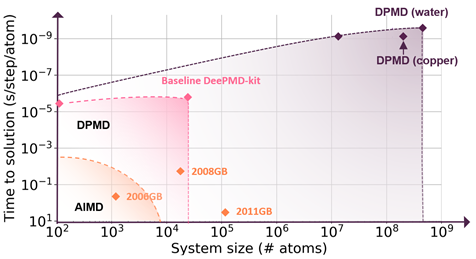
Molecular simulation communities have faced the accuracy-versus-efficiency dilemma in modeling the potential energy surface and interatomic forces for decades. Deep Potential, the artificial neural network force field, solves this problem by combining the speed of classical molecular dynamics (MD) simulation with the accuracy of density functional theory (DFT) calculation.1 This is achieved by��
]]>
Data scientists wrestle with many challenges that slow development. There are operational tasks, including software stack management, installation, and updates that impact productivity. Reproducing state-of-the-art assets can be difficult as modern workflows include many tedious and complex tasks. Access to the tools you need is not always fast or convenient. Also, the use of multiple tools and��
]]>
Today, NVIDIA announced that it will help developers, researchers, and data scientists working with Graph Neural Networks (GNN) on large heterogeneous graphs with billions of edges by providing GPU-accelerated Deep Graph Library (DGL) containers. These containers will enable developers to work more efficiently in an integrated, GPU-accelerated environment that combines DGL and PyTorch.
]]>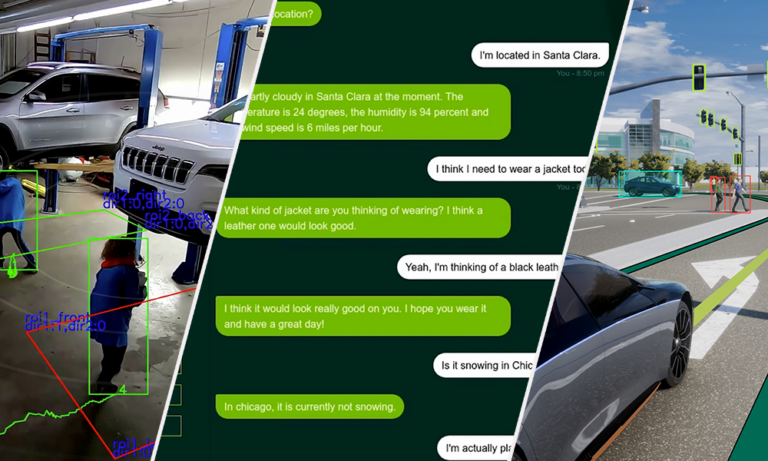
Join NVIDIA November 8-11, showcasing over 500 GTC sessions covering the latest breakthroughs in AI and deep learning, as well as many other GPU technology interest areas. Below is a preview of some of the top AI and deep learning sessions including topics such as training, inference, frameworks, and tools��featuring speakers from NVIDIA. Deep Learning Demystified: AI has evolved and��
]]>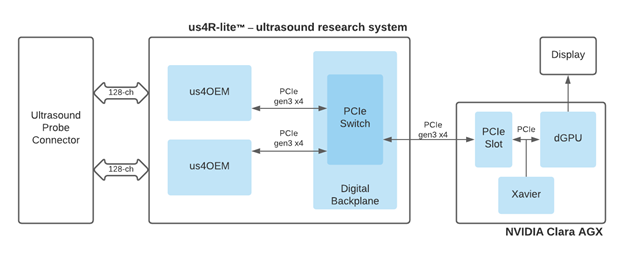
The NVIDIA Clara AGX development kit with the us4R ultrasound development system makes it possible to quickly develop and test a real-time AI processing system for ultrasound imaging. The Clara AGX development kit has an Arm CPU and high-performance RTX 6000 GPU. The us4R teamwork provides ultrasound system designers with the ability to develop, prototype, and test end-to-end software-defined��
]]>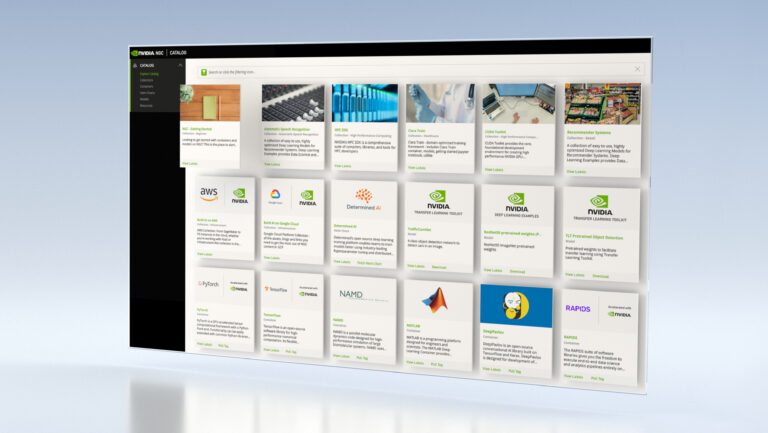
The NVIDIA NGC catalog is a hub for GPU-optimized deep learning, machine learning, and HPC applications. With highly performant software containers, pretrained models, industry-specific SDKs, and Helm Charts the content available on the catalog helps simplify and accelerate end-to-end workflows. A few additions and software updates to the NGC catalog include: NVIDIA NeMo (Neural��
]]>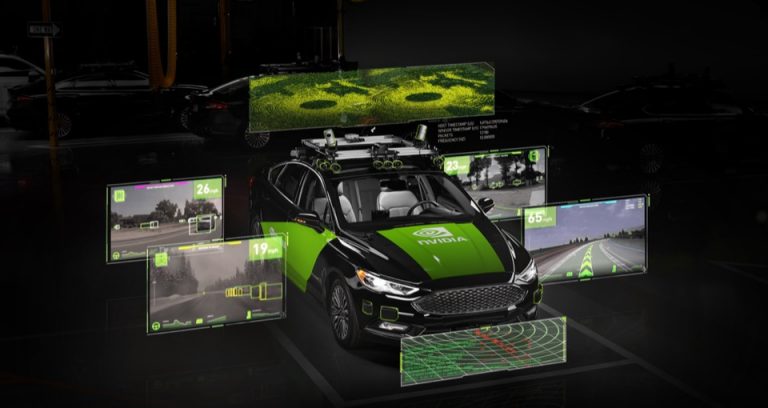
NVIDIA DRIVE OS 5.2.6 Linux SDK is now available on the NVIDIA DRIVE Developer site, providing developers with the latest operating system and development environment purpose-built for autonomous vehicles. As the foundation of the NVIDIA DRIVE SDK, NVIDIA DRIVE OS is designed specifically for accelerated computing and artificial intelligence. It includes NVIDIA CUDA for efficient parallel��
]]>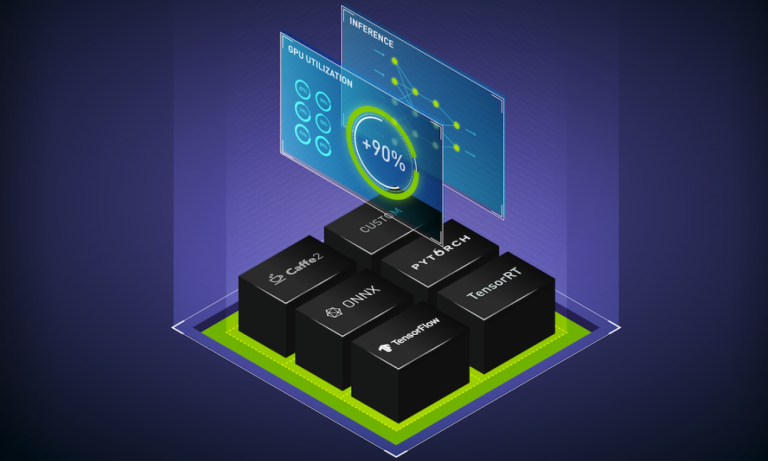
Join the NVIDIA Triton and NVIDIA TensorRT community to stay current on the latest product updates, bug fixes, content, best practices, and more. The rapid growth in artificial intelligence is driving up the size of data sets, as well as the size and complexity of networks. AI-enabled applications like e-commerce product recommendations, voice-based assistants, and contact center automation��
]]>
The NGC team is hosting a webinar with live Q&A to dive into how to build AI models using PyTorch Lightning, an AI framework built on top of PyTorch, from the NGC catalog. Simplify and Accelerate AI Model Development with PyTorch Lightning, NGC, and AWS September 2 at 10 a.m. PT Organizations across industries are using AI to help build better products, streamline operations��
]]>
The NGC team is hosting a webinar with live Q&A to dive into how to build AI models using PyTorch Lightning, an AI framework built on top of PyTorch, from the NGC catalog. Simplify and Accelerate AI Model Development with PyTorch Lightning, NGC, and AWS September 2 at 10 a.m. PT Organizations across industries are using AI to help build better products, streamline operations��
]]>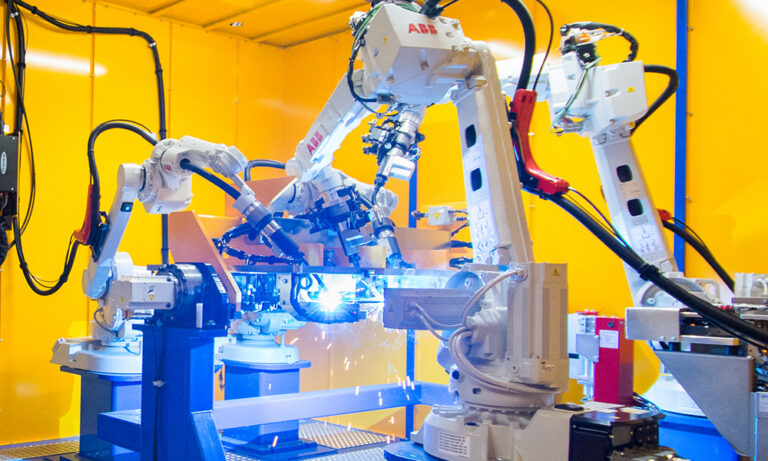
There is an increasing demand for manufacturers to achieve high-quality control standards in their production processes. Traditionally, manufacturers have relied on manual inspection to guarantee product quality. However, manual inspection is expensive, often only covers a small sample of production, and ultimately results in production bottlenecks, lowered productivity, and reduced efficiency.
]]>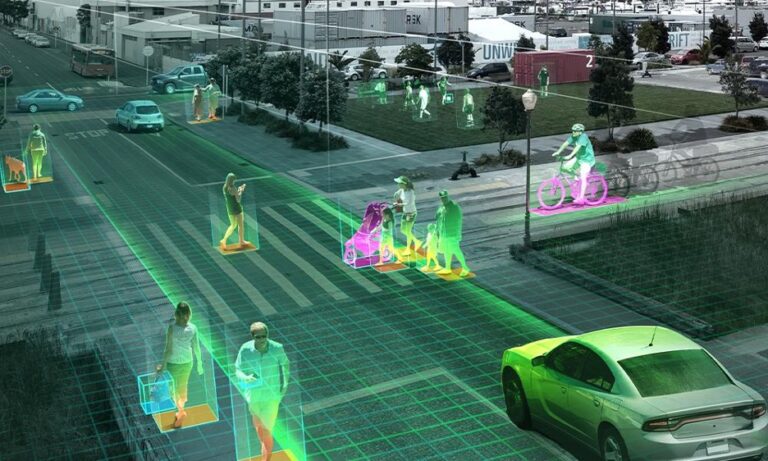
The NGC team is hosting a webinar and live Q&A. Topics include how to use containers from the NGC catalog deployed from Google Cloud Marketplace to GKE, a managed Kubernetes service on Google Cloud, that easily builds, deploys, and runs AI solutions. Building a Computer Vision Service Using NVIDIA NGC and Google Cloud August 25 at 10 a.m. PT Organizations are using computer vision to��
]]>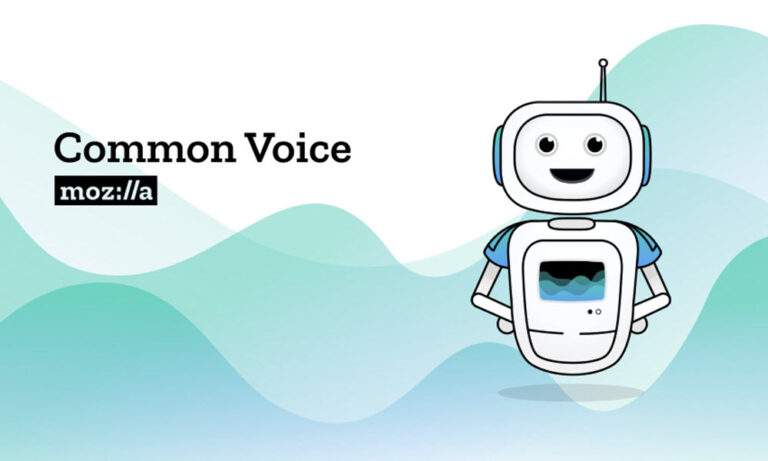
NVIDIA and Mozilla are proud to announce the latest release of the Common Voice dataset, with over 13,000 hours of crowd-sourced speech data, and adding another 16 languages to the corpus. Common Voice is the world��s largest open data voice dataset and designed to democratize voice technology. It is used by researchers, academics, and developers around the world.
]]>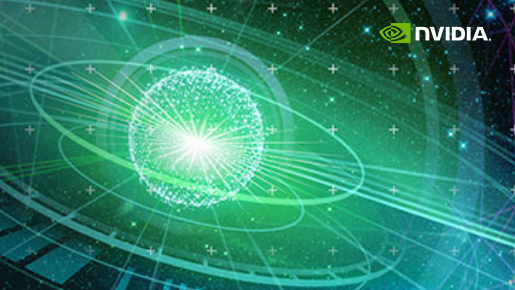
Today, in partnership with NVIDIA, Google Cloud announced Dataflow is bringing GPUs to the world of big data processing to unlock new possibilities. With Dataflow GPU, users can now leverage the power of NVIDIA GPUs in their machine learning inference workflows. Here we show you how to access these performance benefits with BERT. Google Cloud��s Dataflow is a managed service for executing a��
]]>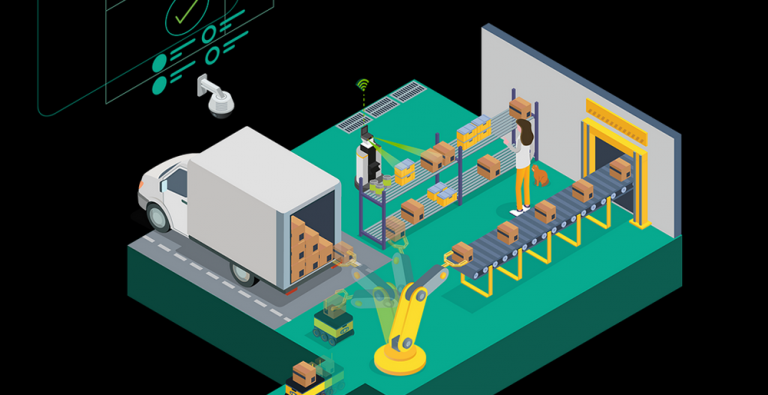
The retail supply chain is complex and includes everything from creating a product, distributing it, putting it on shelves in stores, to getting it into customer hands. Retailers and Consumer Packaged Goods (CPG) companies must look at the entire supply chain for critical gaps and problems that can be solved with technology and automation. Computer vision has been implemented by many of these��
]]>
Edge computing has been around for a long time, but has recently become a hot topic because of the convergence of three major trends �C IoT, 5G, and AI. IoT devices are becoming smarter and more capable, increasing the breadth of applications that can be deployed on them and the environments they can be deployed in. Simultaneously, recent advancements in 5G capabilities give confidence that��
]]>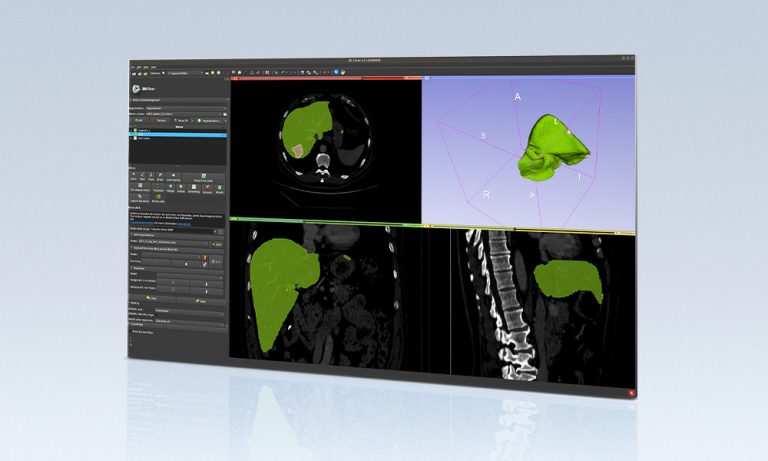
The NVIDIA NGC team is hosting a webinar with live Q&A to dive into this Jupyter notebook available from the NGC catalog. Learn how to use these resources to kickstart your AI journey. Register now: NVIDIA NGC Jupyter Notebook Day: Medical Imaging Segmentation. Image segmentation partitions a digital image into multiple segments by changing the representation into something more meaningful��
]]>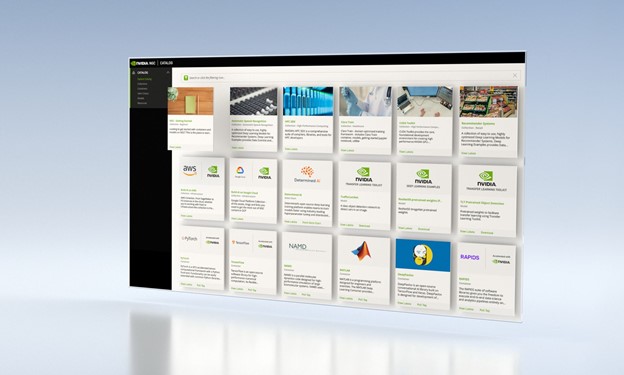
The NVIDIA NGC catalog is a hub of GPU-optimized deep learning, machine learning and HPC applications. With highly performant software containers, pre-trained models, industry specific SDKs and Helm charts you can simplify and accelerate your end-to-end workflows. The NVIDIA NGC team works closely with our internal and external partners to update the content in the catalog on a regular basis.
]]>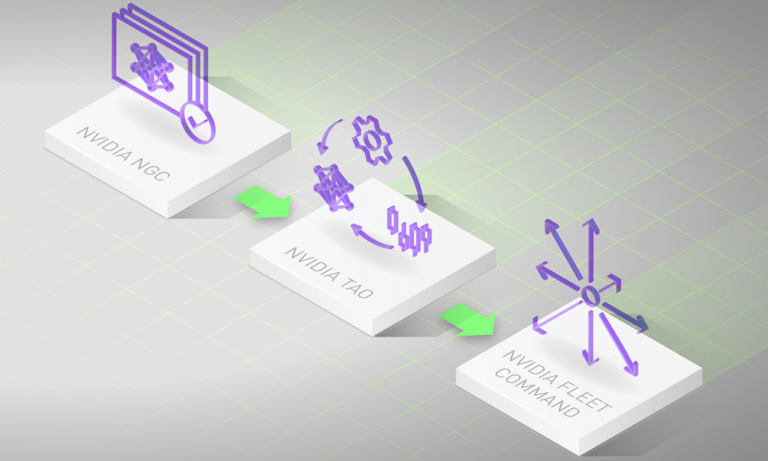
Building a state-of-the-art deep learning model is a complex and time-consuming process. To achieve this, large datasets collected for the model must be of high quality. Once the data is collected, it must be prepared and then trained, and optimized over several iterations. This is not always an option for many enterprises looking to bring their AI applications to market faster while reducing��
]]>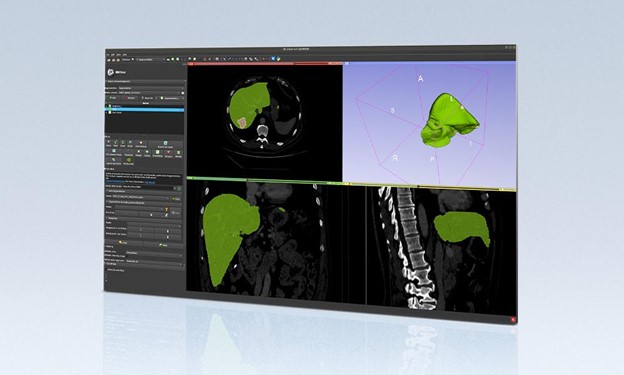
The NVIDIA NGC team is hosting a webinar with live Q&A to dive into our new Jupyter notebook available from the NGC catalog. Learn how to use these resources to kickstart your AI journey. NVIDIA NGC Jupyter Notebook Day: Building a 3D Medical Imaging Segmentation Model Thursday, July 22 at 9:00 AM PT Image segmentation deals with placing each pixel (or voxel in the case of 3D) of an��
]]>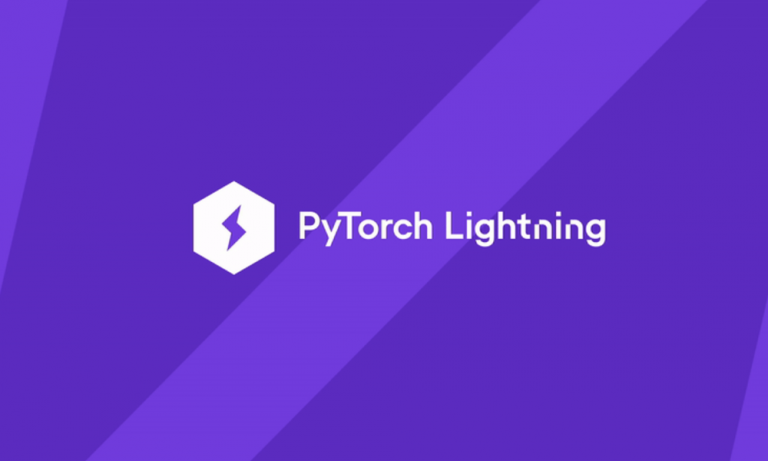
Deep learning research requires working at scale. Training on massive data sets or multilayered deep networks is computationally intensive and can take an impractically long time as deep learning models are bound by memory. The key here is to compose the deep learning models in a structured way so that they are decoupled from the engineering and data, enabling researchers to conduct fast research.
]]>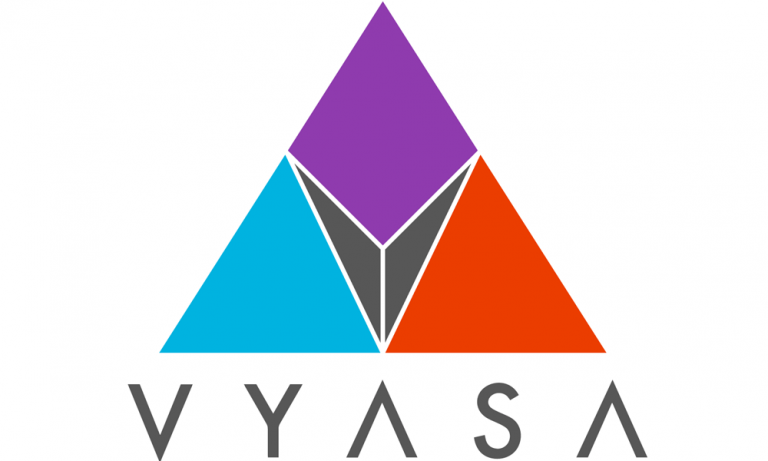
Data is the backbone to building state-of-the-art accurate AI models. And easy access to high-quality data sets can reduce the overall development time significantly. However, the required data may be siloed, can come from different sources (for example, sensors, images, documents) and can be in structured as well as unstructured formats. Manually moving and transforming data from different��
]]>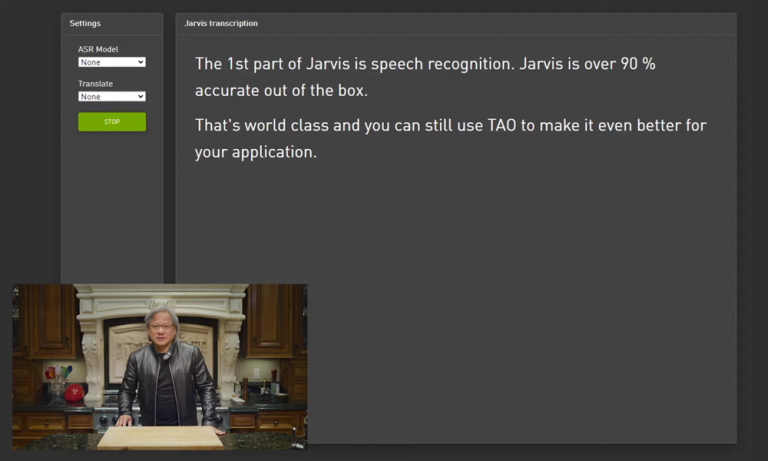
NVIDIA recently released NVIDIA Riva with world-class speech recognition capability for enterprises to generate highly accurate transcriptions and NVIDIA NeMo 1.0, which includes new state-of-the-art speech and language models for democratizing and accelerating conversational AI research. NVIDIA Riva world-class speech recognition is an out-of-the-box speech service that can be easily��
]]>
NVIDIA Clara AGX SDK 3.0 is available today! The Clara AGX SDK runs on the NVIDIA Jetson and Clara AGX platform and provides developers with capabilities to build end-to-end streaming workflows for medical imaging. The focus of this release is to provide added support for NGC containers, including TensorFlow and PyTorch frameworks, a new ultrasound application, and updated Transfer Learning��
]]>
At GTC ��21, experts presented a variety of technical talks to help people new to AI, or just those looking for tools to speed-up their AI development using the various components of the NGC catalog, including: Watch these on-demand sessions to learn how to build solutions in the cloud with NVIDIA AI software from NGC. Building a Text-to-Speech Service that Sounds Like You This��
]]>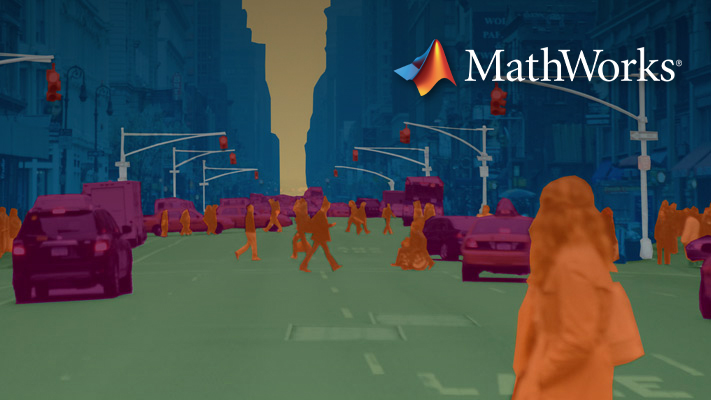
Announcing the availability of MATLAB 2021a on the NGC catalog, NVIDIA��s hub of GPU-optimized AI and HPC software. The latest version provides full support for running deep learning, automotive and scientific analysis on NVIDIA��s Ampere GPUs. In addition to supporting Ampere GPUs, the latest version also includes the following features and benefits: Download the MATLAB R2021a��
]]>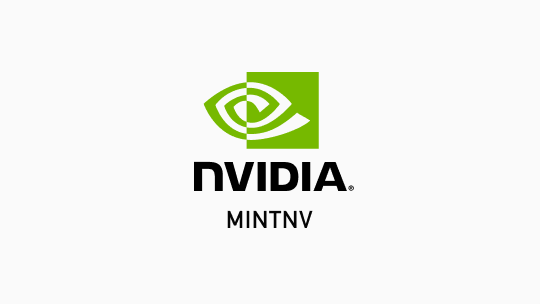
Machine Learning (ML) comes in many forms that have evaded the standard tools and techniques of cybersecurity professionals. Attacking ML requires an intersection of knowledge between data science and offensive security to answer the question, ��How can this be attacked?�� Cybersecurity professionals and data scientists need to hone these new skills to answer this difficult question.
]]>
NVIDIA CUDA-X AI is a deep learning software stack for researchers and software developers to build high performance GPU-accelerated applications for conversational AI, recommendation systems and computer vision. Learn what��s new in the latest releases of the CUDA-X AI tools and libraries. For more information on NVIDIA��s developer tools, join live webinars, training, and Connect with the��
]]>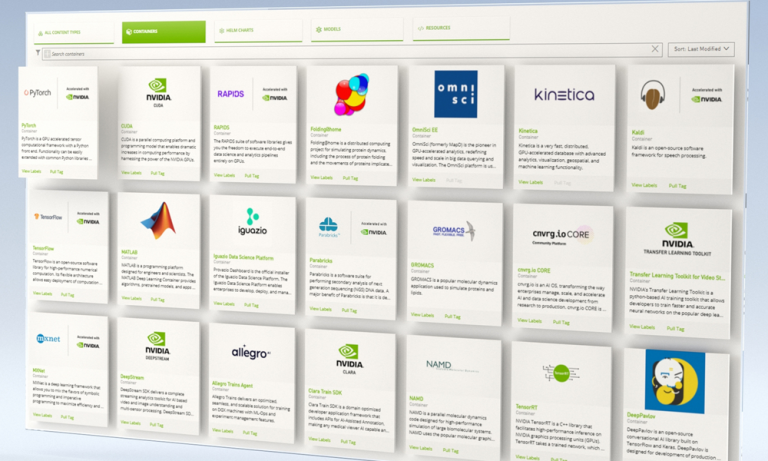
A container is a portable unit of software that combines the application and all its dependencies into a single package that is agnostic to the underlying host OS. In a high-performance computing (HPC) environment, containers remove the need for building complex environments or maintaining environment modules, making it easy for researchers and systems administrators to deploy their HPC��
]]>
Building, deploying, and managing end-to-end ML pipelines in production, particularly for applications like recommender systems is challenging. Operationalizing ML models, within enterprise applications, to deliver business value involves a lot more than developing the machine learning algorithms and models themselves �C it��s a continuous process of data collection and preparation, model building��
]]>
Join the NVIDIA Triton and NVIDIA TensorRT community to stay current on the latest product updates, bug fixes, content, best practices, and more. High-energy physics research aims to understand the mysteries of the universe by describing the fundamental constituents of matter and the interactions between them. Diverse experiments exist on Earth to re-create the first instants of the universe.
]]>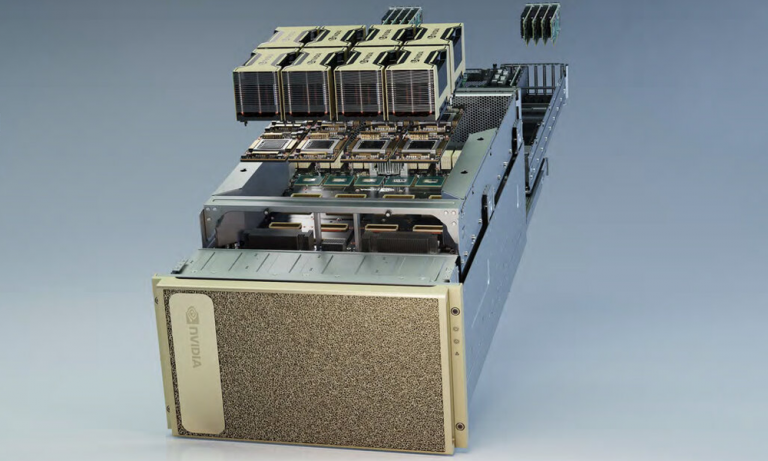
NVIDIA announced its latest update to the HPL-AI Benchmark version 2.0.0, which will reside in the HPC-Benchmarks container version 21.4. The HPL-AI (High Performance Linpack �C Artificial Intelligence) benchmark helps evaluate the convergence of HPC and data-driven AI workloads. Historically, HPC workloads are benchmarked at double-precision, representing the accuracy requirements in��
]]>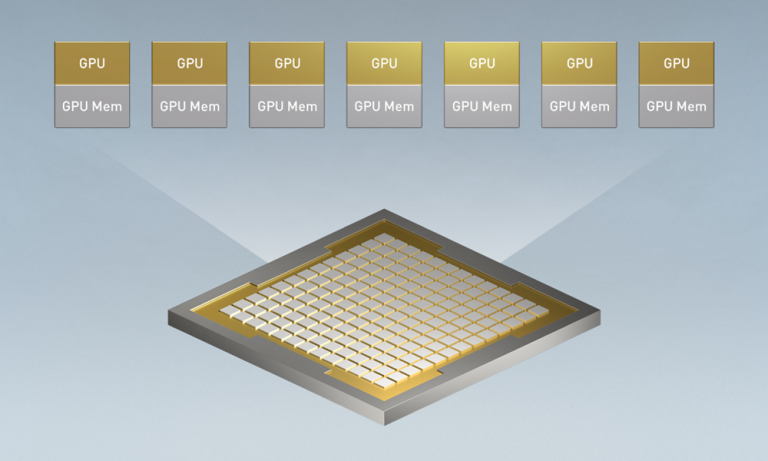
Inference is where we interact with AI. Chat bots, digital assistants, recommendation engines, fraud protection services, and other applications that you use every day��all are powered by AI. Those deployed applications use inference to get you the information that you need. Given the wide array of usages for AI inference, evaluating performance poses numerous challenges for developers and��
]]>
One of the main challenges and goals when creating an AI application is producing a robust model that is performant with high accuracy. Building such a deep learning model is time consuming. It can take weeks or months of retraining, fine-tuning, and optimizing until the model satisfies the necessary requirements. For many developers, building a deep learning AI pipeline from scratch is not a��
]]>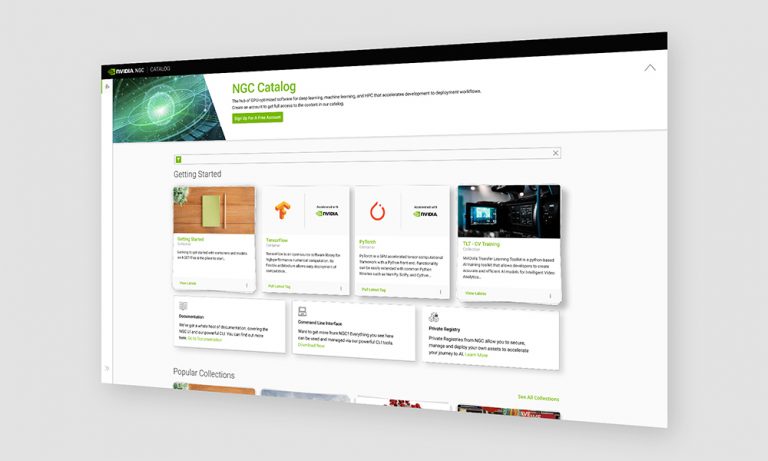
The NVIDIA NGC catalog, a GPU-optimized hub for HPC, ML and AI applications, now has a new look and we��re really excited about it! Over the past few months we��ve been working with our community, design and research teams to bring you an enhanced user experience, engineered to deliver the most relevant content and features, faster than ever before. The new user interface��
]]>Containers have quickly gained strong adoption in the software development and deployment process and has truly enabled us to manage software complexity. It is not surprising that, by a recent Gartner report, more than 70% of global organizations will be running containerized applications in production by 2023. That��s up from less than 20% in 2019. However, containers also bring security��
]]>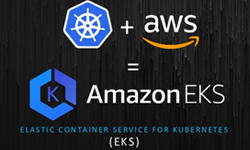
Deployment and integration of trained machine learning (ML) models in production remains a hard problem, both for application developers and the infrastructure teams supporting them. How do you ensure you have the right-sized compute resources to support multiple end-users, serve multiple disparate workloads at the highest level of performance, automatically balancing the load, scale up or down��
]]>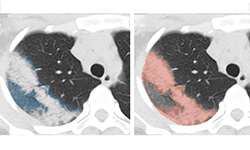
Researchers from the U.S. National Institutes of Health have collaborated with NVIDIA experts on an AI-accelerated method to monitor COVID-19 disease severity over time from patient chest CT scans. Published today in Scientific Reports, this work studied the progression of lung opacities in chest CT images of COVID patients, and extracted insights about the temporal relationships between CT��
]]>
NVIDIA GTC starts on April 12th with more than 1,400 sessions including the latest deep learning technologies in conversational AI, recommender systems, computer vision, and video streaming. Here��s a preview of some of the top AI/DL sessions at GTC. Register today for GTC or explore more deep learning sessions to learn about the latest breakthroughs in AI��
]]>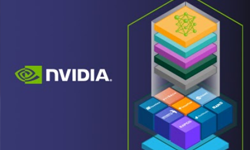
Conversational AI, the ability for machines to understand and respond to human queries, is being widely adopted across industries as enterprises see the value of this technology through solutions like chatbots and virtual assistants to better support their customers while lowering the cost of customer service. You can now build your own AI-powered Q&A service with the step-by-step��
]]>
By Dave Salvator, Senior Manager, Product Marketing at NVIDIA NVIDIA and Google Cloud are making it possible for applications to push the boundaries of accelerated AI across a wide array of applications. With its new A2 VM, announced today, Google Cloud provides customers the largest configuration of 16 NVIDIA A100 GPUs in a single VM. Also available are smaller GPU configurations including 1��
]]>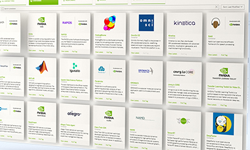
The NVIDIA NGC catalog is a hub for GPU-optimized deep learning, machine learning and high-performance computing (HPC) applications. With highly performant software containers, pre-trained models, industry specific SDKs and Helm Charts, the content available on the catalog helps you simplify and accelerate your end-to-end workflows. The NVIDIA NGC team works closely with our internal and��
]]>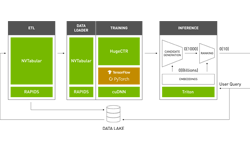
Relevant recommenders have the potential to impact millions of human decisions each day and build trust. Today, data scientists and machine learning engineers responsible for building relevant and impactful recommenders face challenges including slow pipelines, large embedding tables exceeding memory, and maintaining high throughput while maintaining low latency. These challenges are not��
]]>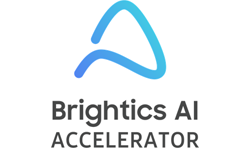
Training AI models is an extremely time-consuming process. Without proper insight into a feasible alternative to time-consuming development and migration of model training to exploit the power of large, distributed clusters, training projects remain considerably long lasting. To address these issues, Samsung SDS developed the Brightics AI Accelerator. The Kubernetes-based��
]]>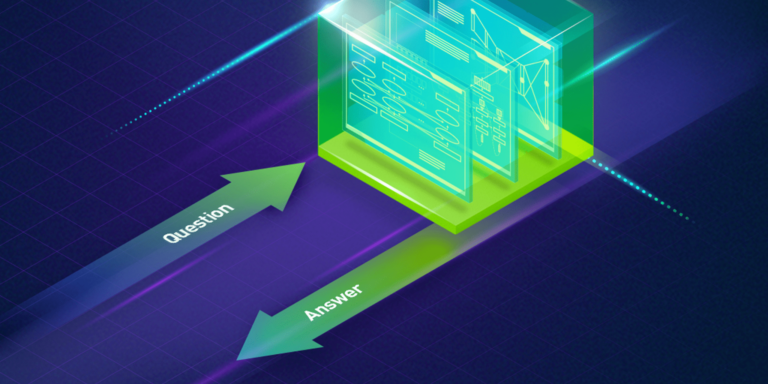
Enterprises across industries are leveraging natural language process (NLP) solutions��from chatbots to audio transcription��to improve customer engagement, increase employee productivity, and drive revenue growth. NLP is one of the most challenging tasks for AI because it must understand the underlying context of text without explicit rules in human language. Building an AI-powered solution��
]]>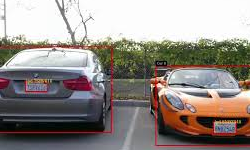
Intelligent vision and speech-enabled services have now become mainstream, impacting almost every aspect of our everyday life. AI-enabled video and audio analytics are enhancing applications from consumer products to enterprise services. Smart speakers at home. Smart kiosks or chatbots in retail stores. Interactive robots on factory floors. Intelligent patient monitoring systems at hospitals.
]]>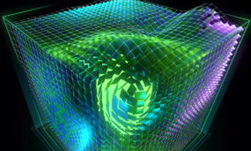
NVIDIA CUDA-X AI are deep learning libraries for researchers and software developers to build high performance GPU-accelerated applications for conversational AI, recommendation systems and computer vision. CUDA-X AI libraries deliver world leading performance for both training and inference across industry benchmarks such as MLPerf. Learn what��s new in the latest releases of CUDA-X AI��
]]>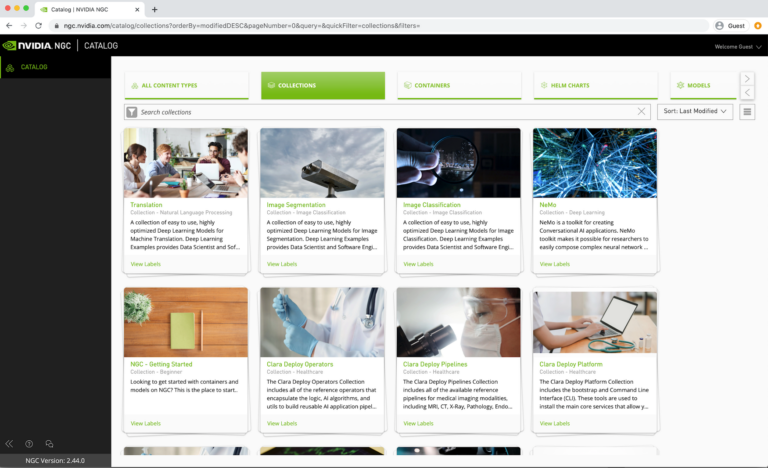
The NVIDIA NGC team is hosting a webinar with live Q&A to dive into this Jupyter notebook available from the NGC catalog. Learn how to use these resources to kickstart your AI journey. Register now: NVIDIA NGC Jupyter Notebook Day: Image Segmentation. Image segmentation is the process of partitioning a digital image into multiple segments by changing the representation of an image into��
]]>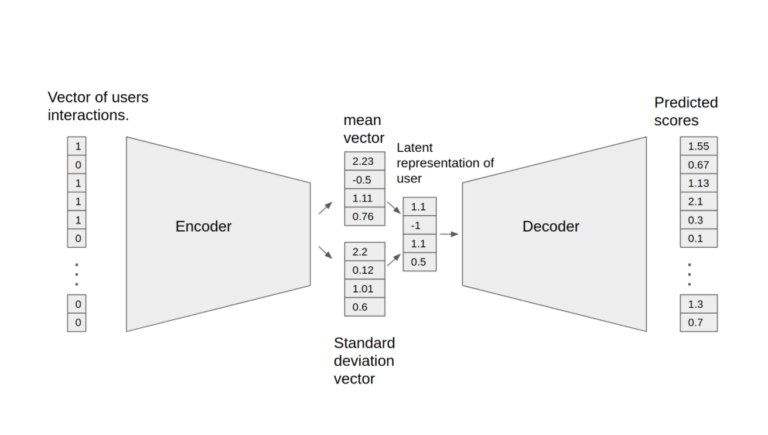
The NVIDIA NGC team is hosting a webinar with live Q&A to dive into this Jupyter notebook available from the NGC catalog. Learn how to use these resources to kickstart your AI journey. Register now: NVIDIA NGC Jupyter Notebook Day: Recommender System. Recommender systems deal with predicting user preferences for products based on historical behavior and are widespread in online retail for��
]]>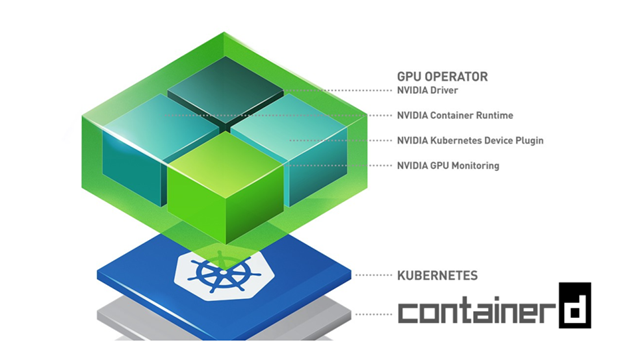
Editor��s note: Interested in GPU Operator? Register for our upcoming webinar on January 20th, ��How to Easily use GPUs with Kubernetes��. For many years, was the only container runtime supported by Kubernetes. Over time, support for other runtimes has not only become possible but often preferred, as standardization around a common container runtime interface (CRI) has solidified in the��
]]>
AI workflows are complex. Building an AI application is no trivial task, as it takes various stakeholders with domain expertise to develop and deploy the application at scale. Data scientists and developers need easy access to software building blocks, such as models and containers, that are not only secure and highly performant, but which have the necessary underlying architecture to build their��
]]>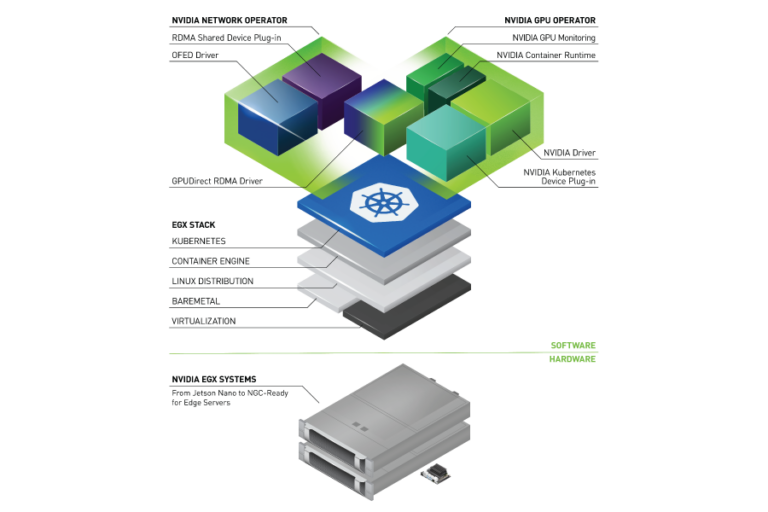
Editor��s note: Interested in GPU Operator? Register for our upcoming webinar on January 20th, ��How to Easily use GPUs with Kubernetes��. Reliably provisioning servers with GPUs can quickly become complex as multiple components must be installed and managed to use GPUs with Kubernetes. The GPU Operator simplifies the initial deployment and management and is based on the Operator Framework.
]]>
Image segmentation and recommender system Jupyter notebooks are now available in the NGC catalog. These Jupyter notebooks come with complete instructions on how to train these models using the resources from the NGC catalog. Upcoming Webinars The NVIDIA NGC team is hosting two webinars with live Q&A to dive into two new Jupyter notebooks available from the NGC catalog. Learn how to use��
]]>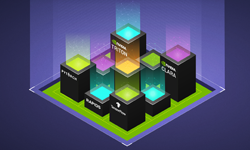
Enterprises across industries are adopting AI to drive business growth and they��re relying on cloud infrastructure to develop and deploy their solutions. To help data scientists and developers simplify their AI workflows, we have collaborated with Amazon Web Services (AWS) to bring NVIDIA NGC software resources directly to the AWS Marketplace. The AWS Marketplace is where customers find��
]]>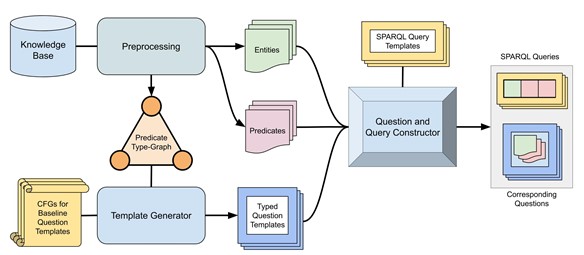
Across several verticals, question answering (QA) is one of the fastest ways to deliver business value using conversational AI. Informally, QA is the task of mapping a user query to an answer from a given context. This open-ended definition is best understood through an example: The example is easy to answer with a deep learning (DL) model. The context, pulled from the Wikipedia extract��
]]>
As AI becomes universal, enterprise leaders are looking to empower their AI teams with fully integrated and automated development environments. Determined AI��s application available in the NVIDIA NGC catalog, a GPU-optimized hub for AI applications, provides an open-source platform that enables deep learning engineers to focus on building models and not managing infrastructure.
]]>
Data scientists and researchers work toward solving the grand challenges of humanity with AI projects such as developing autonomous cars or nuclear fusion energy research. They depend on powerful, high-performance AI platforms as essential tools to conduct their work. Even enterprise-grade AI implementation efforts��adding intelligent video analytics to existing video camera streams or image��
]]>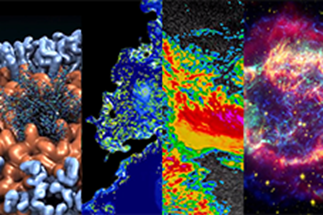
HPC development environments are typically complex configurations composed of multiple software packages, each providing unique capabilities. In addition to the core set of compilers used for building software from source code, they often include a number of specialty packages covering a broad range of operations such as communications, data structures, mathematics, I/O control��
]]>
Conversational AI solutions such as chatbots are now deployed in the data center, on the cloud, and at the edge to deliver lower latency and high quality of service while meeting an ever-increasing demand. The strategic decision to run AI inference on any or all these compute platforms varies not only by the use case but also evolves over time with the business. Hence��
]]>
Recently we announced the launch of collections as a key feature of the NGC catalog. There we have curated relevant containers, models, code, and helm charts in one place, without having to locate and coordinate various individual building blocks across the catalog. NGC collections span different use cases, ranging from object detection to natural language processing. We are excited to��
]]>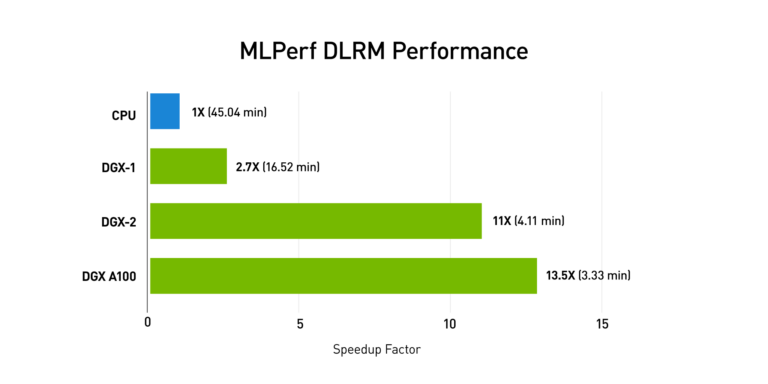
NVIDIA Merlin is an open beta application framework and ecosystem that enables the end-to-end development of recommender systems, from data preprocessing to model training and inference, all accelerated on NVIDIA GPU. We announced Merlin in a previous post and have been continuously making updates to the open beta. In this post, we detail the new features added to the open beta NVIDIA Merlin��
]]>
Recently, NVIDIA CEO Jensen Huang announced updates to the open beta of NVIDIA Merlin, an end-to-end framework that democratizes the development of large-scale deep learning recommenders. With NVIDIA Merlin, data scientists, machine learning engineers, and researchers can accelerate their entire workflow pipeline from ingesting and training to deploying GPU-accelerated recommenders (Figure 1).
]]>
Hospitals today are seeking to overhaul their existing digital infrastructure to improve their internal processes, deliver better patient care, and reduce operational expenses. Such a transition is required if hospitals are to cope with the needs of a burgeoning human population, accumulation of medical patient data, and a pandemic. The goal is not only to digitize existing infrastructure but��
]]>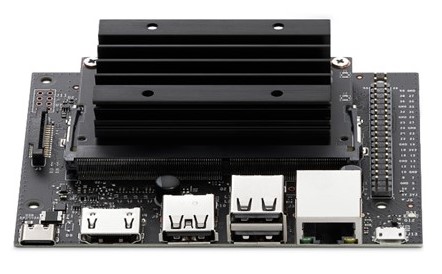
Today, NVIDIA announced the Jetson Nano 2GB Developer Kit, the ideal hands-on platform for teaching, learning, and developing AI and robotics applications. The NVIDIA Jetson platform introduced six years ago revolutionized embedded computing by delivering the power of artificial intelligence to edge computing devices. NVIDIA Jetson today is widely used in diverse fields such as robotics, retail��
]]>
Building an AI application can be complex. It��s never a case of simply running and grabbing the latest framework container or simply downloading the model and code needed to build your AI app. It takes all of these components and more to build a solution for your use case, which is why we built the NGC catalog. The NGC catalog provides you with easy access to secure and optimized containers��
]]>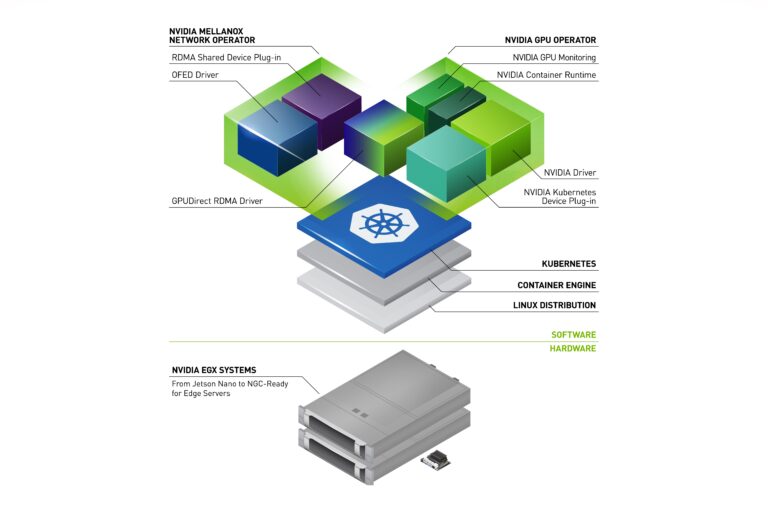
Edge computing takes place close to the data source to reduce network stress and improve latency. GPUs are an ideal compute engine for edge computing because they are programmable and deliver phenomenal performance per dollar. However, the complexity associated with managing a fleet of edge devices can erode the GPU��s favorable economics. In 2019, NVIDIA introduced the GPU Operator to��
]]>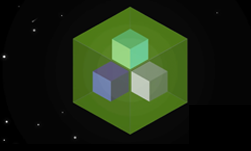
The pre-trained models on the NVIDIA NGC catalog offer state of the art accuracy for a wide variety of use-cases including natural language understanding, computer vision, and recommender systems. NGC models now include the important credentials that help data scientists and developers quickly identify the right model to deploy for their AI software development. These credentials provide a��
]]>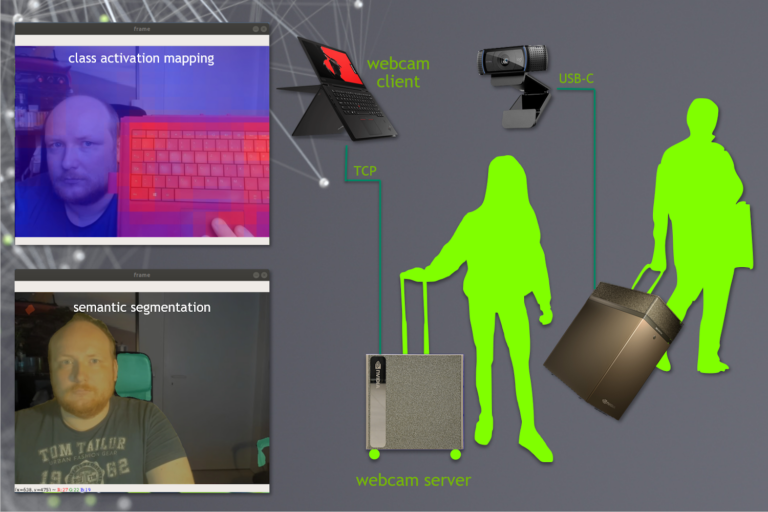
Imagine that you have just finished implementing an awesome, interactive, deep learning pipeline on your NVIDIA-accelerated data science workstation using OpenCV for capturing your webcam stream and rendering the output. A colleague of yours mentions that exploiting the novel TF32 compute mode of the Ampere microarchitecture third-generation Tensor Cores might significantly accelerate your��
]]>
With the introduction of Intel Thunderbolt 3 in laptops, you can now use an external GPU (eGPU) enclosure to use a dedicated GPU for gaming, production, and data science. A Thunderbolt 3 eGPU setup consists of Most enclosures provide all of these, so all you need to use them is a laptop with Thunderbolt 3. Because I value the portability of a thin and light laptop but want the raw��
]]>